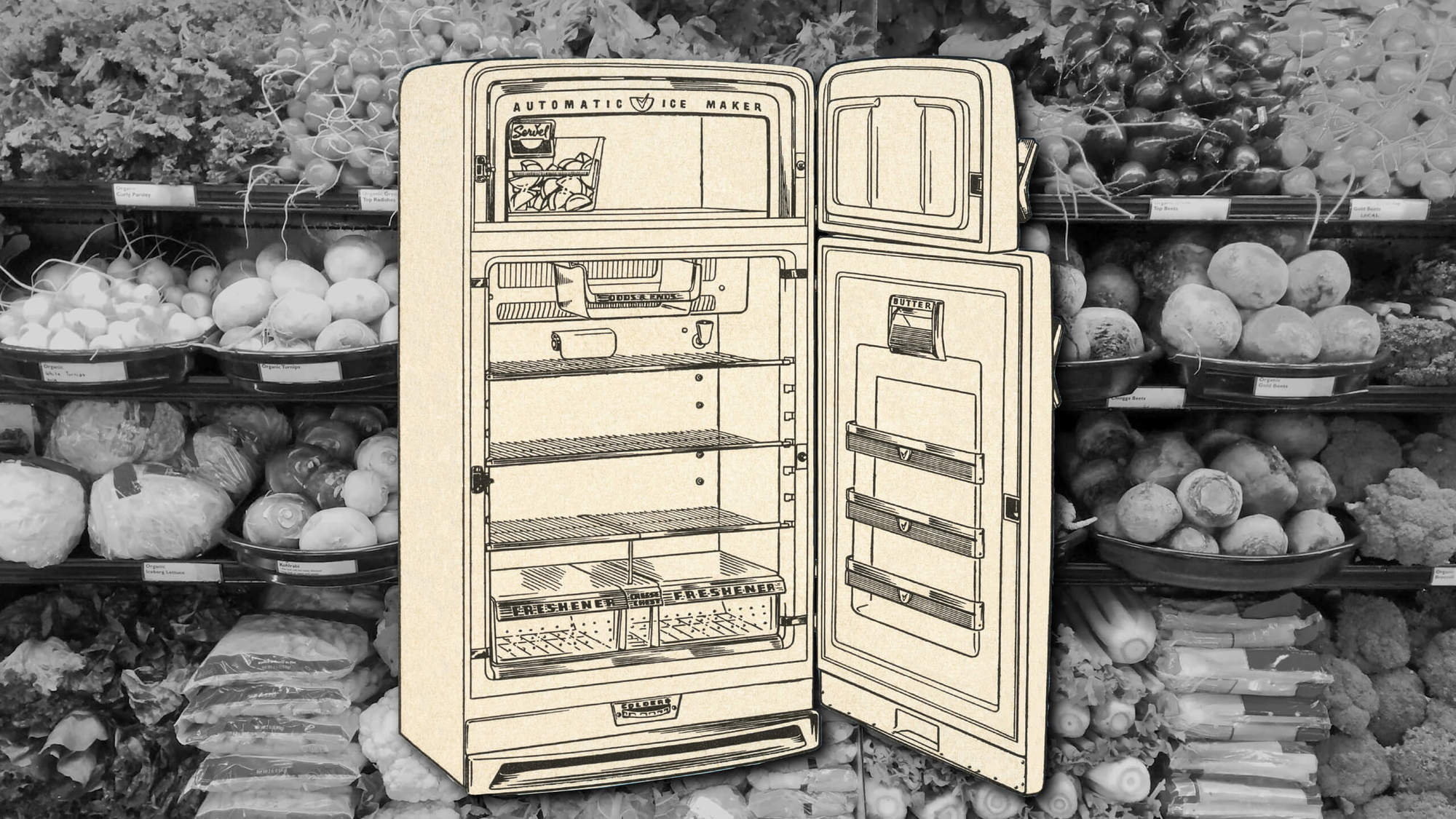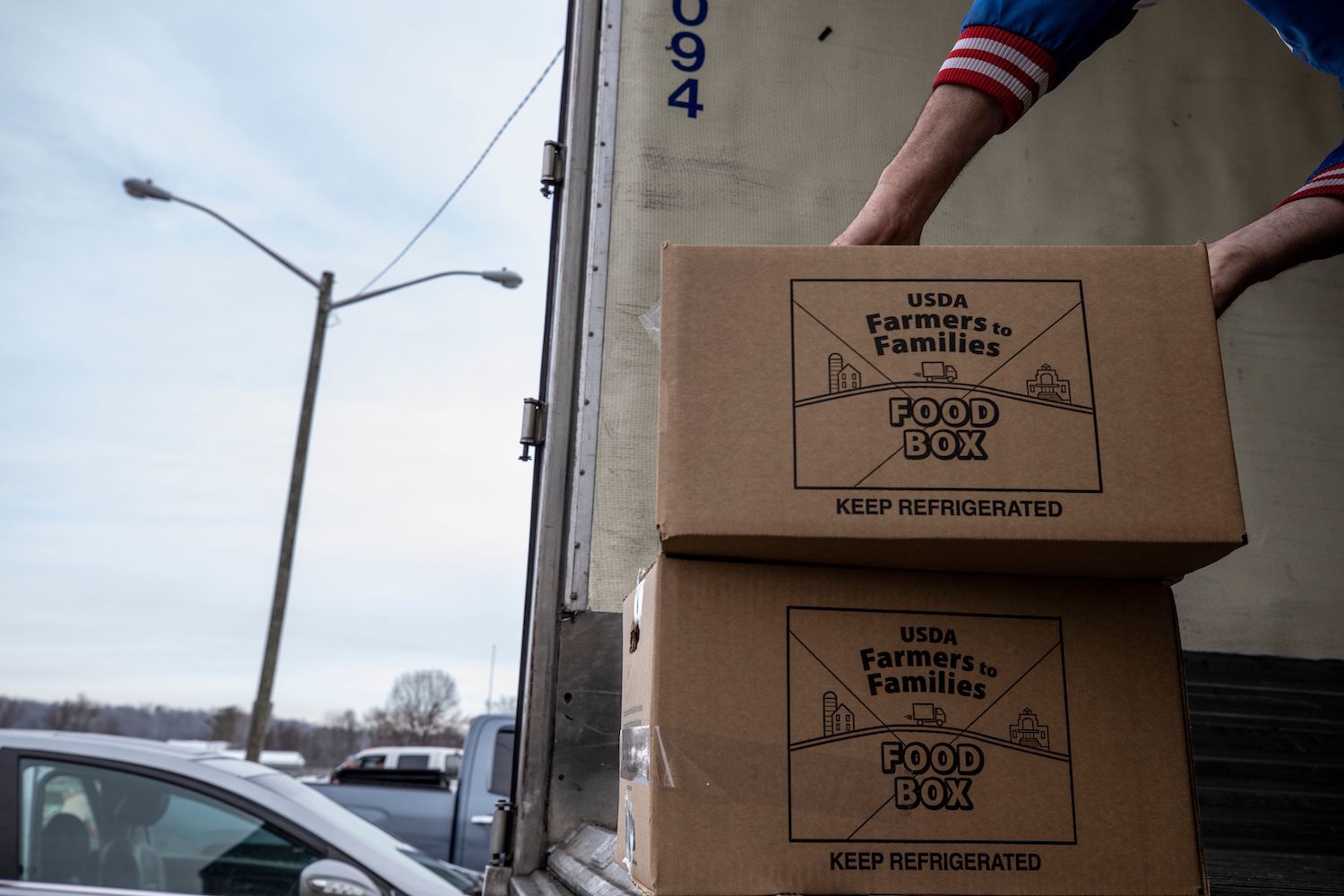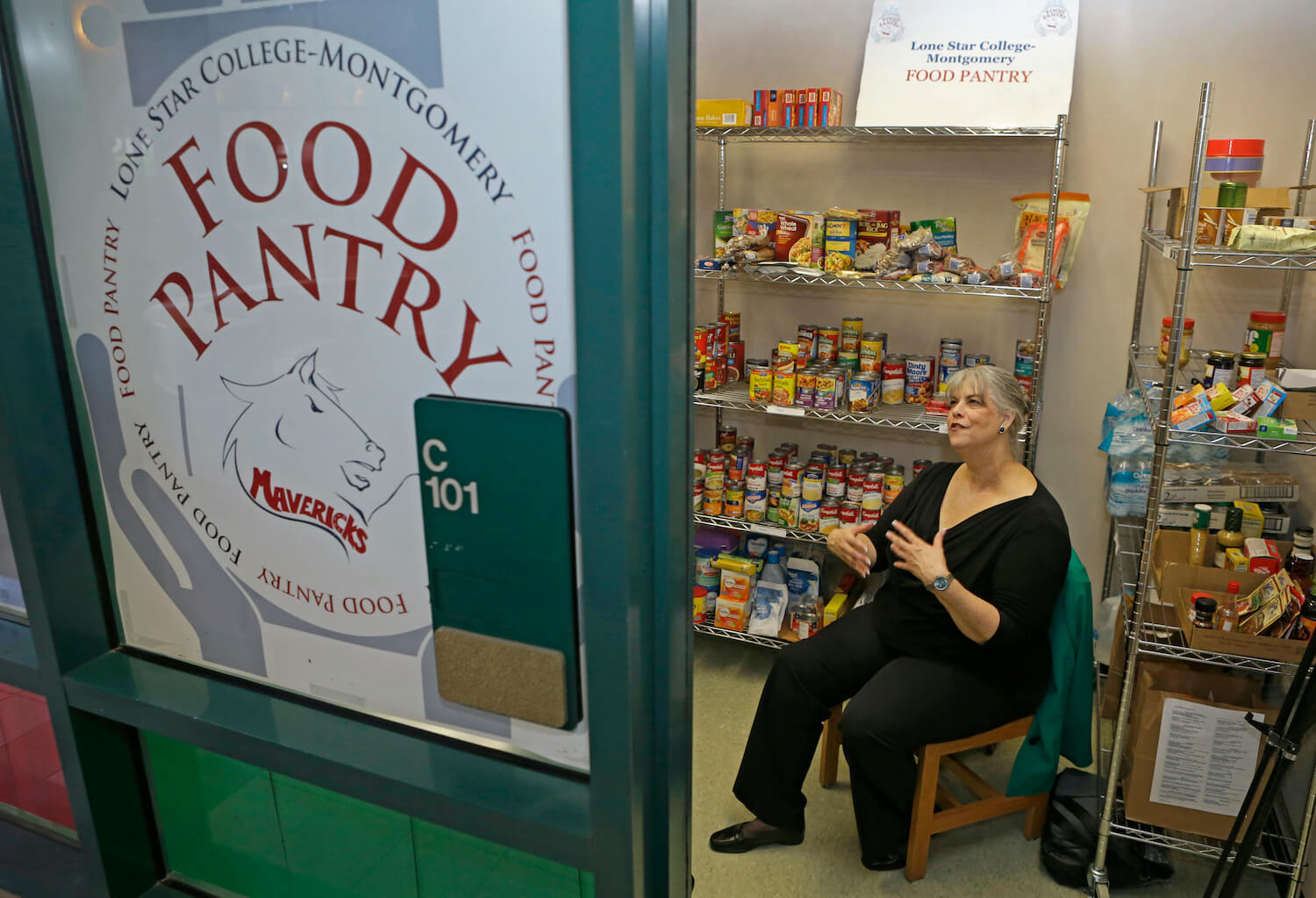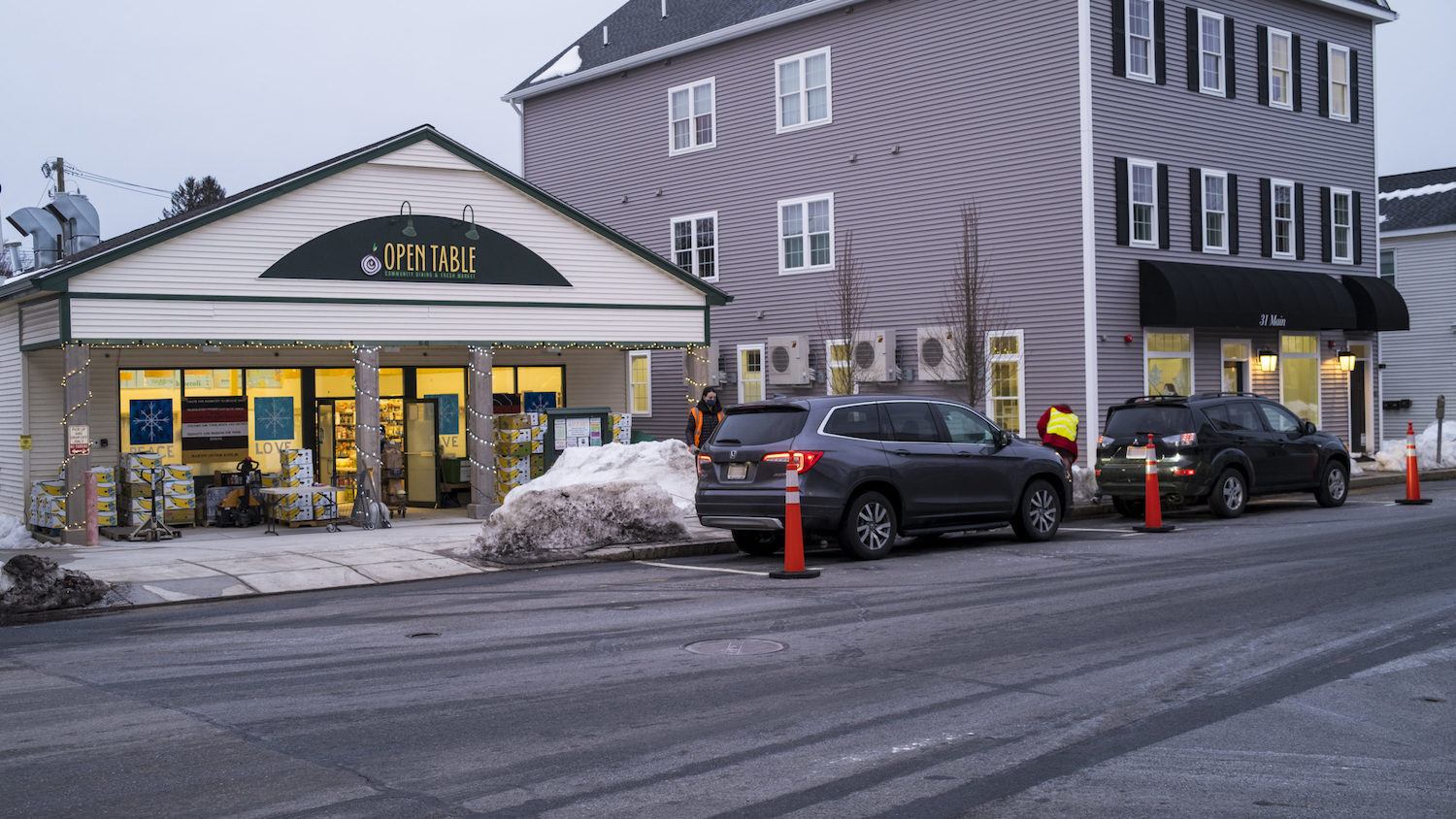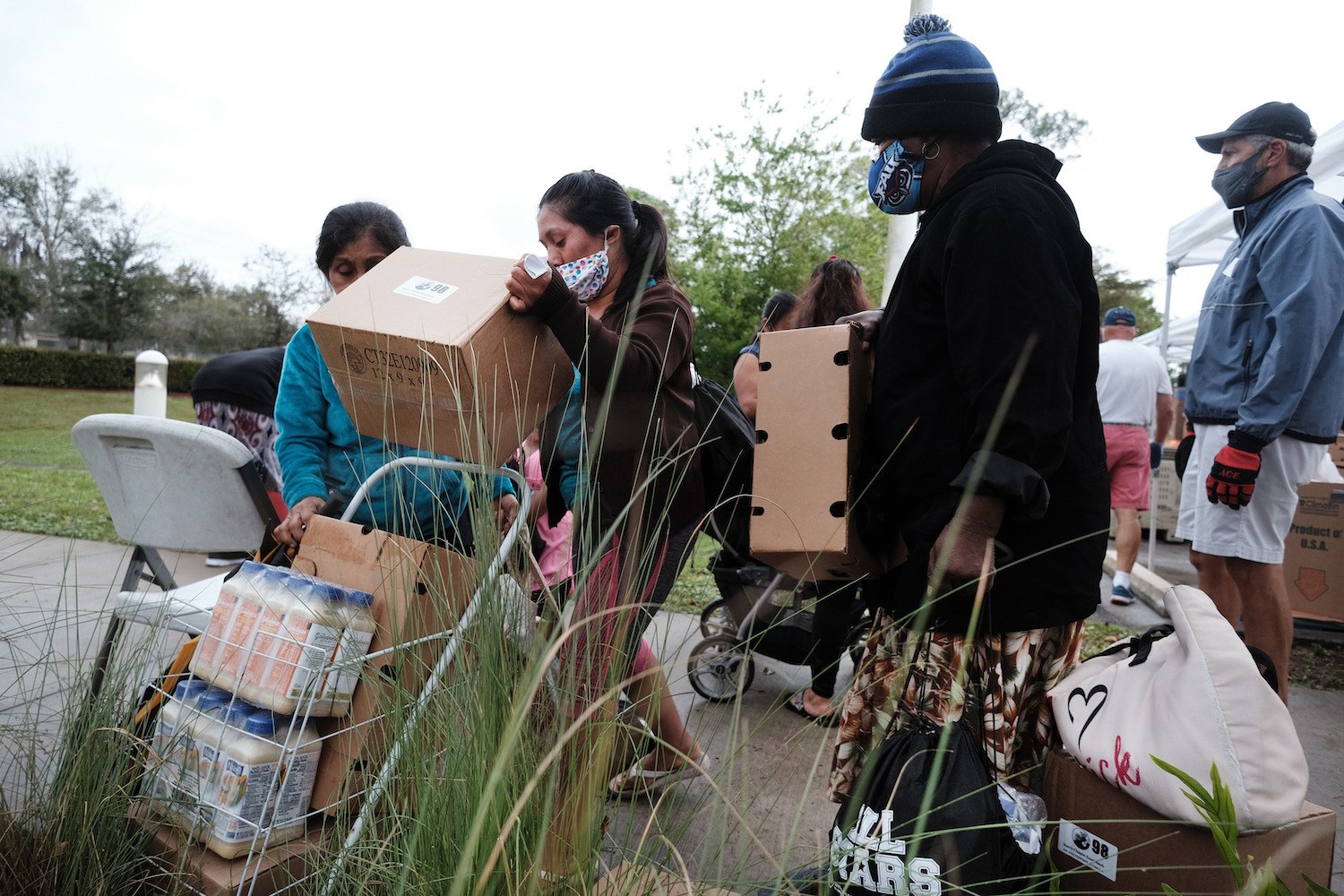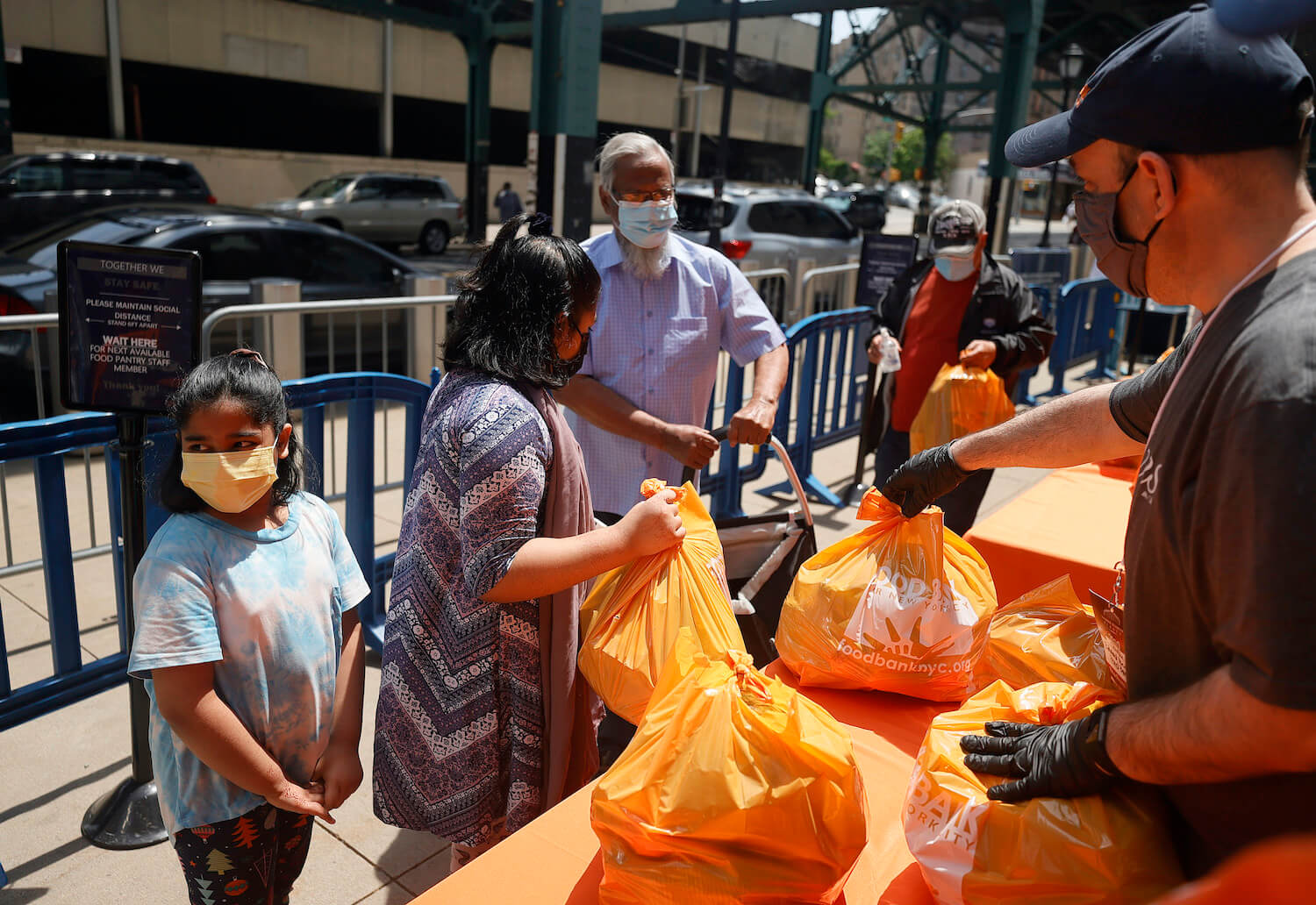
Michael Loccisano/Getty Images for Food Bank For New York City
Food banks and pantries saw a surge of need during the pandemic. To keep helping effectively, they’ll have to address systemic shortfalls.
Starting in late March 2020, food banks, pantries, and other charitable food organizations experienced a sharp surge in need. That’s around the time Covid-19 restrictions began causing spikes in unemployment, especially among lower-wage workers who may already have been living paycheck to paycheck. The orgs’ increased needs included traditional food distribution services, but with significantly more first-time clients; services they hadn’t been compelled to offer before, like home deliveries and curbside pickups; and increased volunteer labor, as the generally older, retired volunteer pool stayed home due to illness or fear.
These were just a few of the findings in a study released this May by the Duke World Food Policy Center and advocacy nonprofit WhyHunger. Researchers surveyed 242 organizations in 39 states for a close-up look at the emergency food landscape as it was battered by the pandemic. The study confirmed—no real surprise after snaking lines outside food pantries—that the vast majority of these organizations were overwhelmed by demand.
But embedded in the study’s data is some revolutionary news: 68 percent of frontline organizations like food pantries and 80 percent of hunger advocacy organizations believe they should focus more effort on tackling the root causes of food insecurity, including poverty and structural racism within the food system. Yes, they’d been largely able to get ever more sustenance to food-insecure Americans during the last chaotic year. But they also recognized that charitable feeding cannot go on as it currently exists.
“A whole industry has developed around charitable feeding, yet we’ve barely pushed below the 12 percent food insecurity rate.”
In the last 50 years, “a whole industry has developed around charitable feeding, yet we’ve barely pushed below the 12 percent food insecurity rate,” said Alison Cohen, WhyHunger’s senior director of programming. “What we’re seeing now is community-based emergency food providers embracing the idea that charity is not going to end hunger. We’re at the proverbial crossroads … where we can continue to buck up the emergency food system, or we can be honest and say: ‘This is no longer an emergency because it’s a chronic need.’”
Katie Martin, executive director of the Foodshare Institute for Hunger Research and Solutions, and author of Reinventing Food Banks and Pantries, called this philosophical shift “exciting and encouraging.” In the past, many anti-hunger organizations have made the straightforward decision to focus largely on the most pressing need: food distribution. But due to the pandemic and a renewed awareness of racial and economic injustices, “people are realizing we have to think beyond food,” Martin said. And charitable food operations are recognizing they need to advocate for the very changes that would improve outcomes in their sector.
The shift is happening alongside the national conversation about who doesn’t have enough to eat and why, as well as how to make a lasting dent in food insecurity. The Biden administration has taken aim at poverty with a new monthly child tax credit that will hit in July, Pandemic EBT (P-EBT) cards for families whose children had no access to school meals last year, and two rounds of stimulus payments.
“What we’ve seen in response to the pandemic is that government really stepped in to make it easier for people to access SNAP and [WIC] and school meals and other financial supports, things anti-hunger advocates have been clamoring for for decades,” said Martin, referring to the Supplemental Nutrition Assistance Program (SNAP); Special Supplemental Nutrition Program for Women, Infants, and Children (WIC); and the National School Lunch and Summer Food Service programs.
The trick: figuring out how to make these more solvent times last.
“If you lift the hood and look under there, [these programs] as they currently exist are really out of line with the reality of people’s needs.”
During the pandemic, the WhyHunger study showed that 88 percent of food banks saw an increase in demand for existing services and half added new services. Government funding and private donations increased concurrently, according to Martin, to meet the needs of a rapidly swelling number of food-insecure Americans—from 35 million in 2019 up to an estimated 50 million in 2020.
They also experienced struggles that made their core mission much harder. Fifty-two percent of these organizations didn’t have enough volunteers to meet the need, 63 percent didn’t have adequate refrigeration to store fresh foods (a barrier to nutrition security), and the vast majority reported they suffered the whims of unpredictable supply chains.
But a significant number of food banks and pantries also began implementing programs to address racial inequities in the food system. That included pushing to make some pandemic SNAP waivers permanent, and overhauling the program to increase access and benefits. Currently, the average benefit is about $4.50 per person per day and 18 percent of SNAP-eligible Americans aren’t enrolled in the program, according to USDA data. The racial connection to food insecurity is also clear: Pre-pandemic, 28 percent of Black and 13 percent of Hispanic (versus about 7 percent of white) U.S. residents utilized charity food services.
Charitable food groups also aim to implement universal school meals so all kids can eat for free, and to make P-EBT a permanent summer and holiday feeding solution. “If you lift the hood and look under there, [these programs] as they currently exist are really out of line with the reality of people’s needs,” said Diane Schanzenbach, director of the Institute for Policy Research at Northwestern University.
To alleviate racial and economic injustices, charitable organizations have also come to realize they need to advocate for better immigration policy and fair wages.
To alleviate racial and economic injustices, charitable organizations have also come to realize they need to advocate for better immigration policy and fair wages. “That is new, the idea of supporting living wage and fair wage campaigns, underscoring the critical importance of economic justice” in trying to eradicate food insecurity, said Cohen. Not to mention, “More than 50 percent of folks who use community-based food pantries on a regular basis are using them not just for emergencies; this has become a chronic need for many families.”
According to Martin, fair-wage advocacy work needs to target corporate America, too. Although companies may make generous donations to food banks and pantries, they could have a much more significant and lasting impact by offering living wages, benefits, and other financial support to free their workers from dependency on the charitable food system. (Relatedly, the Biden administration has thus far been unsuccessful in its bid to increase the federal minimum wage for all U.S. workers.)
Additionally, charitable food orgs can implement what Martin calls “workforce evolution”: connecting pantry visitors to job-readiness and skills-building programs, and partnering with potential employers to connect them to workers. That evolution should also encompass their own volunteer workforce. For example, said Cohen, “Imagine hundreds or thousands of volunteers getting training not just about how to package food, but in why [they are] here in the first place, and what are the underlying reasons we’ve had this highly sophisticated emergency food system in place for 50 years.” More of such training would lead to higher numbers of engaged advocates, she believes.
Cohen and Martin would like to explore more dignified ways to serve clients: providing mobile distribution where appropriate, allowing people to “shop” instead of receiving pre-packed food boxes, and increasing access to healthy foods from local farms. Racial and economic justice would also mean paying living wages to food pantry staff; being open multiple days a week; and “flipping 180 degrees when it comes to education,” said Martin. Rather than simply working to educate clients about healthy foods and how to cook them, “we need to listen to food pantry guests and have them educate us about what types of food they’re requesting, what foods are in line with their cultural heritage, and what locations are most convenient to pick up food, then provide that education to donors.”
Schanzenbach said she’s optimistic that the current momentum both outside and within the charitable food world could finally start yanking food insecurity out by its roots. That said, neither she nor Martin nor Cohen believe the need for the charitable food system will disappear anytime soon. “Lower-income people always suffer longer during recessions and for them, recovery is slower,” Schanzenbach pointed out. “I’m telling my friends in the charity food sector and anyone else who will listen that we’re still going to see elevated need for a while.”
In the meantime, work among charitable food organizations to understand how structural racism perpetuates economic injustice, which perpetuates food insecurity, continues apace. “But there’s still so much to learn about how to dismantle it,” said Cohen.

